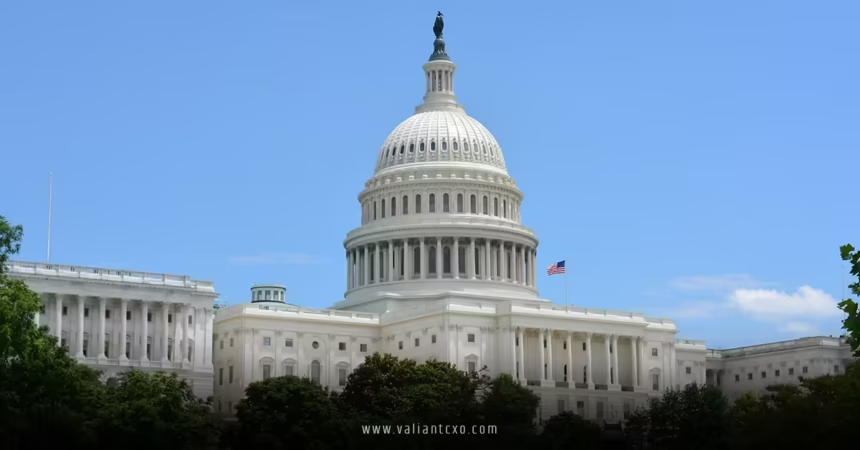Federal Housing Policies and Their Impact on Americans shape how millions of us live, from the roofs over our heads to the financial burdens we carry. Ever wonder how a decision made in Washington can ripple through your neighborhood, affecting whether you rent, buy, or even stay in your home? Let’s dive into the world of federal housing policies, unpack their complexities, and see how they touch every corner of American life. From affordability crises to homeownership dreams, these policies are more than just paperwork—they’re the scaffolding of our communities.
What Are Federal Housing Policies?
Federal housing policies are rules, programs, and regulations crafted by the U.S. government to influence housing availability, affordability, and quality. Think of them as the blueprint for how America builds its homes and neighborhoods. They cover everything from mortgage lending to public housing, rental assistance, and urban development. Agencies like the Department of Housing and Urban Development (HUD) and the Federal Housing Administration (FHA) play starring roles, setting the stage for how Americans access and afford housing.
These policies aren’t just abstract laws; they’re deeply personal. They decide whether a young couple can afford their first home or if a low-income family gets a safe place to live. Federal Housing Policies and Their Impact on Americans ripple through the economy, influence social equity, and even shape the skyline of our cities.
A Brief History of Federal Housing Policies
To understand Federal Housing Policies and Their Impact on Americans, let’s take a quick trip back in time. The Great Depression in the 1930s was a game-changer. With foreclosures skyrocketing, the government stepped in, creating the Home Owners’ Loan Corporation to refinance mortgages and save homes. Then came the FHA in 1934, insuring loans to make homeownership more accessible. Fast forward to the post-World War II era, and the GI Bill helped veterans buy homes, fueling suburban growth.
Over the decades, policies evolved. The Fair Housing Act of 1968 aimed to end discriminatory practices like redlining, though challenges persist. Programs like Section 8 and public housing initiatives emerged to support low-income families. Each policy, from the New Deal to today, has left its mark, shaping who gets to live where and how.
How Federal Housing Policies Affect Homeownership
Owning a home is the American Dream, right? But Federal Housing Policies and Their Impact on Americans can either make that dream a reality or keep it just out of reach. Let’s break it down.
Mortgage Accessibility and FHA Loans
The FHA has been a lifeline for first-time buyers. By insuring loans, it reduces the risk for lenders, allowing them to offer mortgages with lower down payments—sometimes as little as 3.5%. This is huge for folks who can’t save up a hefty 20% down payment. But there’s a catch: FHA loans come with mortgage insurance premiums, which can add hundreds to your monthly bill. For some, this is a fair trade; for others, it’s a financial strain.
Federal Housing Policies and Their Impact on Americans also extend to interest rates. When the Federal Reserve adjusts rates, it affects mortgage costs nationwide. Lower rates can spark a buying frenzy, while higher ones can freeze the market, leaving would-be homeowners stuck renting.
Tax Incentives and Deductions
Who doesn’t love a tax break? Federal policies like the mortgage interest deduction let homeowners deduct interest paid on their loans, reducing their tax burden. Sounds great, but it mostly benefits higher earners with pricier homes. For middle- and low-income families, the impact is often minimal. Federal Housing Policies and Their Impact on Americans here can feel like a mixed bag—helping some climb the property ladder while others are left on the ground floor.
Rental Markets and Federal Support
Not everyone wants or can afford to buy a home, and that’s where federal policies for renters come in. Federal Housing Policies and Their Impact on Americans in the rental market are critical, especially as rents soar in many cities.
Section 8 and Voucher Programs
The Section 8 Housing Choice Voucher Program is a cornerstone of federal rental assistance. It helps low-income families pay rent by covering a portion of it, letting them live in private housing rather than public projects. But here’s the rub: funding is limited, and waitlists can stretch for years. Imagine being told you qualify for help but have to wait a decade to get it—frustrating, right?
Federal Housing Policies and Their Impact on Americans also influence landlord participation. Some landlords refuse Section 8 vouchers due to bureaucratic hurdles or stigma, limiting options for voucher holders. This creates a bottleneck, trapping families in substandard housing or high-cost rentals.
Public Housing Challenges
Public housing, another federal initiative, provides homes for millions but often gets a bad rap. Underfunding has led to crumbling infrastructure in some projects, making them less than ideal places to live. Federal Housing Policies and Their Impact on Americans here can feel like a double-edged sword: offering shelter but sometimes at the cost of quality and safety. Efforts to revitalize public housing, like the HOPE VI program, aim to modernize these spaces, but progress is slow.
Addressing Homelessness Through Federal Policies
Homelessness is a crisis that Federal Housing Policies and Their Impact on Americans can’t ignore. Programs like HUD’s Continuum of Care and Rapid Re-Housing provide funding to local agencies to get people off the streets and into stable homes. These initiatives focus on quick intervention—think of it as an emergency bandage for a deeper wound.
But here’s the kicker: these programs often lack the scale to match the problem. With rising costs and stagnant wages, more Americans are one missed paycheck away from homelessness. Federal Housing Policies and Their Impact on Americans need to go beyond temporary fixes, addressing root causes like affordability and job security.
The Role of Zoning and Urban Development
Ever wonder why some neighborhoods have sky-high prices while others languish? Federal Housing Policies and Their Impact on Americans extend to zoning and urban planning. Through grants and incentives, the federal government influences local zoning laws, which dictate what can be built where. For example, Community Development Block Grants fund affordable housing projects, but local resistance (hello, NIMBYs!) can stall progress.
Zoning laws often favor single-family homes, making it harder to build affordable multi-family units. This drives up costs and limits supply, hitting renters and buyers hard. Federal Housing Policies and Their Impact on Americans could push for more inclusive zoning to ease this crunch, but change is slow when local politics get in the way.
Equity and Fair Housing
Let’s talk about fairness. Federal Housing Policies and Their Impact on Americans haven’t always been equitable. The Fair Housing Act was a landmark step, banning discrimination based on race, religion, gender, and more. But enforcement is tricky, and discriminatory practices like steering or biased lending still persist.
For example, studies show Black and Hispanic homebuyers often face higher interest rates than white buyers, even with similar credit scores. Federal Housing Policies and Their Impact on Americans must tackle these disparities head-on, ensuring everyone has a fair shot at housing. Programs like HUD’s Affirmatively Furthering Fair Housing initiative aim to do just that, but progress feels like it’s moving at a snail’s pace.
Economic Ripple Effects
Housing isn’t just about homes—it’s about the economy. Federal Housing Policies and Their Impact on Americans influence job markets, consumer spending, and even GDP. When housing is affordable, people have more money to spend on other things, boosting local businesses. But when prices skyrocket, folks tighten their belts, and the economy feels the pinch.
Take the 2008 housing crisis—a stark reminder of how federal policies (or lack thereof) can shake things up. Lax oversight of mortgage lending led to a bubble that burst, leaving millions underwater. Federal Housing Policies and Their Impact on Americans now include stricter regulations, like the Dodd-Frank Act, to prevent another meltdown. But are they enough?
Challenges and Criticisms
No policy is perfect, and Federal Housing Policies and Their Impact on Americans face plenty of criticism. Some argue they favor homeowners over renters, deepening inequality. Others say programs like Section 8 are underfunded, leaving too many in the lurch. Then there’s the bureaucracy—endless red tape that slows down aid and frustrates everyone involved.
There’s also the issue of unintended consequences. For instance, tax breaks for homeowners can inflate home prices, making it harder for new buyers to enter the market. Federal Housing Policies and Their Impact on Americans need constant tweaking to balance these trade-offs, but getting it right is like walking a tightrope.
The Future of Federal Housing Policies
What’s next for Federal Housing Policies and Their Impact on Americans? With housing costs outpacing wages, there’s growing pressure for bold action. Proposals like expanding Section 8 funding, increasing affordable housing tax credits, or even experimenting with universal basic income could reshape the landscape. Climate change is another factor—policies may need to prioritize resilient housing as natural disasters become more frequent.
Technology could also play a role. Imagine streamlined applications for housing aid or data-driven urban planning to optimize land use. Federal Housing Policies and Their Impact on Americans will need to adapt to these changes, balancing innovation with fairness.
Conclusion
Federal Housing Policies and Their Impact on Americans are a complex web of rules and programs that shape our lives in profound ways. From helping first-time buyers secure loans to providing rental assistance and fighting homelessness, these policies touch every corner of society. But they’re not without flaws—underfunding, bureaucracy, and inequity pose real challenges. As we look to the future, it’s clear that bold, inclusive policies are needed to ensure every American has a safe, affordable place to call home. So, let’s keep the conversation going—because housing isn’t just a policy issue; it’s personal.
FAQs
1. How do Federal Housing Policies and Their Impact on Americans affect first-time homebuyers?
Federal Housing Policies and Their Impact on Americans make homeownership more accessible through programs like FHA loans, which offer low down payments. However, costs like mortgage insurance can add up, and rising interest rates may limit affordability.
2. What is the role of Section 8 in federal housing policies?
Section 8 provides rental assistance to low-income families, covering part of their rent in private housing. Federal Housing Policies and Their Impact on Americans here aim to reduce housing insecurity, but limited funding means long waitlists.
3. How do federal policies address housing discrimination?
The Fair Housing Act, part of Federal Housing Policies and Their Impact on Americans, bans discrimination in housing based on race, religion, and other factors. Enforcement remains a challenge, with ongoing efforts to close gaps.
4. Why are zoning laws part of federal housing policies?
Federal Housing Policies and Their Impact on Americans influence zoning through grants and incentives, encouraging affordable housing development. However, local resistance can limit their effectiveness in increasing housing supply.
5. Can federal housing policies solve the homelessness crisis?
Federal Housing Policies and Their Impact on Americans include programs like Rapid Re-Housing to combat homelessness. While helpful, these efforts often lack the scale to fully address the crisis, needing broader solutions.
For More Updates !! : valiantcxo.com


